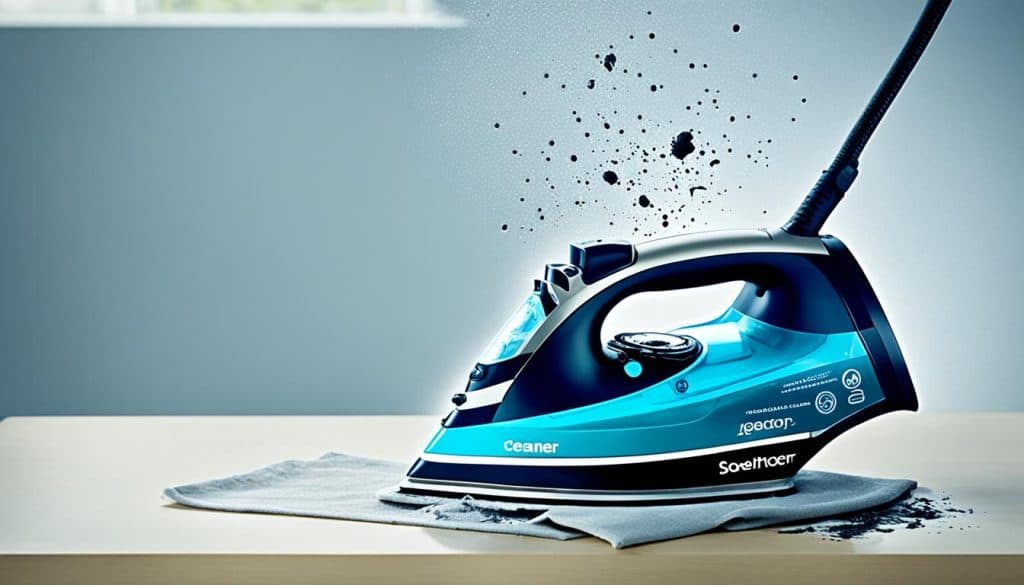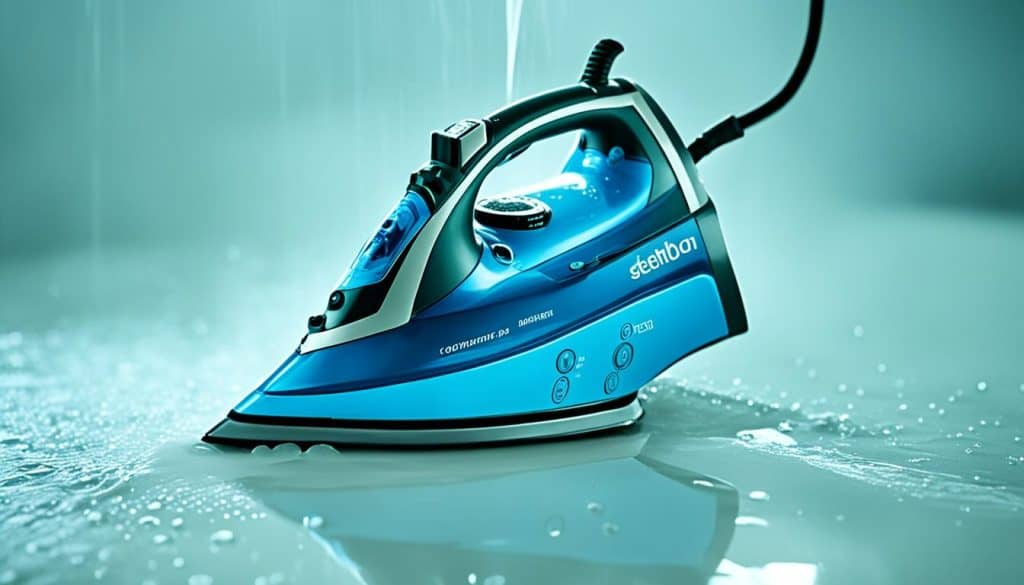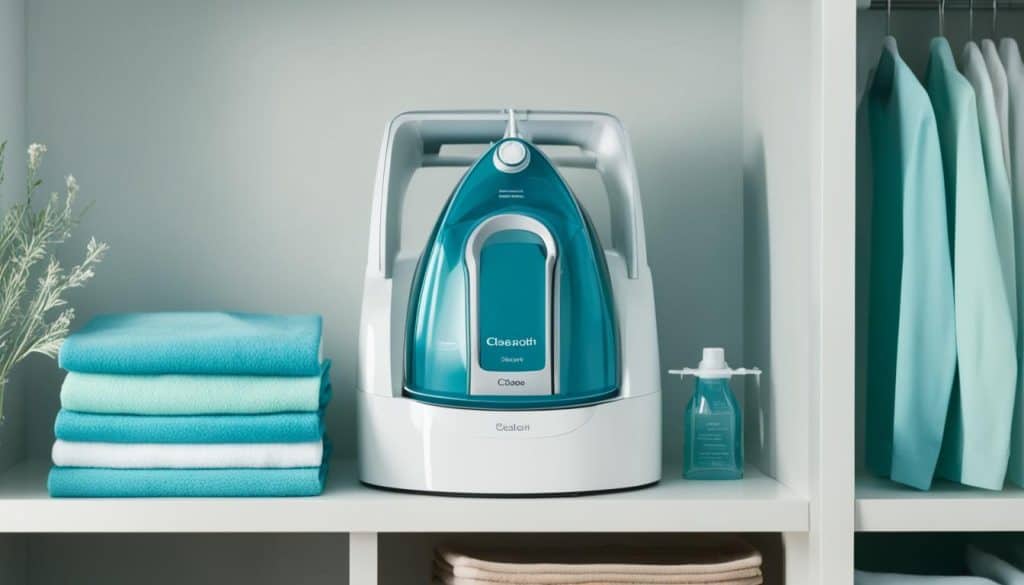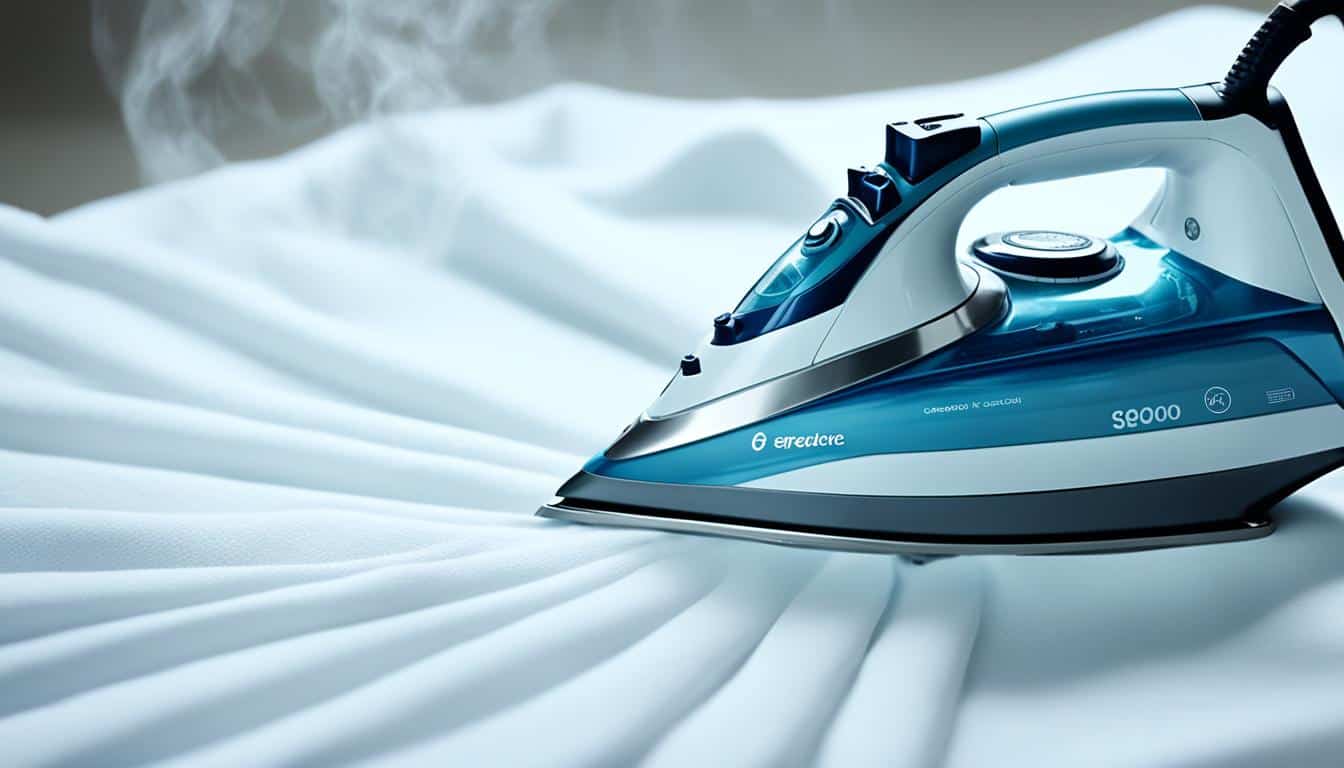Do you think you’re using your steam iron correctly? Are your clothes coming out perfectly pressed, or are you facing constant wrinkles and frustration? There might be some mistakes you’re making without even realizing it.
Here’s a question to ponder: Can you avoid these common mistakes and achieve flawless results every time you iron your clothes?
In this article, we will uncover the five most common mistakes people make when using their steam iron—and provide you with the knowledge to avoid them. By mastering these ironing techniques, you’ll be on your way to wrinkle-free, perfect garments every time.
Ignoring the Fabric Settings
One common mistake people make when using their steam iron is ignoring the fabric settings. Just like you wouldn’t use a bike to race in a car rally, using the wrong heat setting for different fabrics can lead to disaster. Your iron’s fabric settings are designed to provide optimal heat for specific materials, ensuring efficient and safe ironing.
Most steam irons come with a handy guide that tells you which setting to use for different fabrics such as cotton, silk, or polyester. It’s important to take a moment to match the fabric setting to the material you are ironing. This simple step can help you avoid damaging your clothes and achieve professional-looking results.
By following the recommended fabric settings, you can prevent overheating delicate fabrics like silk, which can lead to discoloration or even scorching. On the other hand, using a low heat setting on heavier fabrics like cotton may not effectively remove wrinkles, leaving them less than perfectly pressed.
Don’t underestimate the importance of fabric settings on your steam iron. Take the time to understand and utilize them for different materials. It’s a small adjustment that can make a big difference in the outcome of your ironing tasks.
Skipping the Water Tank Fill-up
One common mistake to avoid when using your steam iron is skipping the water tank fill-up. The water tank is an essential component that enables the steam function of your iron, which is crucial for smoothing out stubborn wrinkles and achieving crisp, wrinkle-free garments. Without water, your iron’s steam function is rendered useless.
Before you start ironing, always check the water level in the tank. It’s important to ensure that the tank has an adequate amount of water to produce sufficient steam. Additionally, using distilled water instead of tap water, if possible, can help prevent mineral buildup inside your iron.
Mineral buildup is a common issue that occurs when untreated tap water is used in the iron. Over time, the minerals in the water can accumulate inside the iron, affecting its performance and potentially causing damage. By utilizing distilled water, you can minimize the risk of mineral buildup and optimize the functionality of your iron.
Pro Tip: If you live in an area with hard water, which contains high mineral content, using distilled water is particularly important. This will help prolong the lifespan of your iron and ensure consistent steam production.

By incorporating the simple step of checking and refilling the water tank before each use, you can enhance the performance of your steam iron and achieve professional-looking results. Don’t overlook this crucial aspect of ironing, as it can make a significant difference in preserving your iron’s longevity and preventing any issues related to mineral buildup.
Ironing Dirty Clothes
Ironing dirty clothes can actually set stains in deeper. Always check for spots or stains on your clothes before ironing. By doing this, you can avoid turning a simple cleanup into a difficult process of removing set-in stains.
Why You Should Check for Spots and Stains
When you iron clothes that have spots or stains, the heat from the iron can cause the stain to set in deeper into the fabric. This makes it much more challenging to remove the stain later on.
To avoid this issue, take a moment to inspect your garments before you start ironing. Look for any noticeable spots or stains, such as food stains, oil marks, or makeup smudges. By identifying these areas beforehand, you can take the necessary steps to remove or treat the stains before the ironing process.
Remember, prevention is always better than cure. Taking a little extra time to check for spots or stains can save you from the frustration of dealing with set-in stains later on.
How to Address Spots and Stains
If you do find spots or stains on your clothes, here are a few steps you can take to address them before ironing:
- Pre-treat the stains: Use a stain remover or a gentle detergent to pre-treat the stained areas. Follow the instructions on the product label and allow the pre-treatment to work its magic before washing the garment.
- Wash the garment: Launder the stained item according to the care instructions on the garment’s tag. Make sure to use the appropriate water temperature and washing cycle for the fabric.
- Dry the garment: After washing, check to see if the stain has been fully removed. If it’s still visible, repeat the pre-treatment and washing process until the stain is gone. Once the garment is clean, allow it to air dry or tumble dry on low heat.
By following these steps, you can effectively remove spots and stains from your clothes, ensuring that your garments are clean and ready for ironing.
Important Note
Never iron over a garment with a fresh stain that hasn’t been treated or washed!
Ironing over a fresh stain can cause the stain to set, making it almost impossible to remove later on. So, always address any spots or stains before ironing to avoid making the situation worse.
Summary
Ironing dirty clothes can lead to the setting of stains, making them more difficult to remove. Avoid this issue by checking for spots or stains before you start ironing. Treat any stains you find before washing and drying the garment. By taking these precautions, you can ensure that your clothes stay pristine and stain-free.
| Step | Description |
|---|---|
| 1 | Pre-treat the stains using a stain remover or gentle detergent. |
| 2 | Wash the garment according to the care instructions. |
| 3 | Dry the garment and check if the stain has been fully removed. Repeat the process if necessary. |
Forgetting the Soleplate Clean-up
When it comes to ironing, many people often overlook the importance of cleaning the soleplate. Over time, the soleplate of your iron can accumulate gunk and residue from various sources, such as melted synthetic fabrics or sticky iron-on patches. This buildup can affect the performance of your iron and lead to uneven heating or even damage to your clothes.
To ensure that your iron glides smoothly over your garments, it’s crucial to regularly clean the soleplate. A simple wipe-down with a damp cloth, when the iron is cool, can remove any residue and keep the soleplate in top condition. Alternatively, you can use a specialized iron cleaner, specifically designed to tackle stubborn stains and grime on the soleplate. By incorporating soleplate cleaning into your ironing routine, you can maintain the efficiency and longevity of your iron.

Benefits of Cleaning the Soleplate
“Cleaning the soleplate not only improves the iron’s performance but also extends its lifespan. A clean soleplate ensures even heat distribution, reducing the risk of scorching or damaging delicate fabrics. It also prevents residue from transferring onto your clothes, preserving their pristine appearance.”
Remember, a well-maintained soleplate is the key to achieving wrinkle-free clothes with ease. Don’t underestimate the impact of regular soleplate clean-up in keeping your iron in top shape.
| Mistake | Consequence |
|---|---|
| Forgetting to clean the soleplate | Accumulation of gunk and residue, affecting iron performance |
| Cleaning the soleplate regularly | Improved iron performance, increased lifespan, and prevention of residue transfer |
Leaving Water in the Iron After Use
Leaving water in your iron after use is a common mistake that can have consequences. Stagnant water can cause mineral buildup and even lead to leaks and drips the next time you use it. To ensure the longevity of your iron and avoid any potential issues, always empty the water tank after you’re finished with your iron.
“Leaving water in the iron after use can result in mineral buildup and potential leaks and drips.”
By taking a few extra seconds to empty the water tank, you can prevent the stagnant water from causing mineral buildup. This buildup can clog the steam vents and affect the smooth functioning of your iron. Additionally, if the water is left for a long time, it may start to evaporate and leave behind mineral deposits, which can be difficult to remove.
Emptying the water tank is a simple yet crucial step in maintaining your iron’s performance. By doing so, you can prevent leaks and drips that can leave unsightly marks on your clothes. Not only will this help you achieve better ironing results, but it will also extend the lifespan of your iron.
Solvent Solution: Minimizing Mineral Buildup
- Use distilled or demineralized water instead of tap water to reduce mineral buildup.
- Regularly descale your iron to remove any accumulated mineral deposits. Refer to the manufacturer’s instructions for the recommended descaling method.
- Consider using ironing aids or additives specifically designed to prevent mineral buildup in the iron.
Proper storage:
Once you’ve emptied the water tank, make sure to store your iron in a clean and dry location. Placing it in an upright position helps prevent any remaining water from leaking or causing damage. Taking these small steps will ensure the performance and longevity of your iron for years to come.
| Common Mistake | Consequences |
|---|---|
| Leaving water in the iron after use | Potential mineral buildup, leaks, and drips |
| Using tap water instead of distilled water | Accelerated mineral buildup and potential clogging |
| Leaving a hot iron unattended | Possible fire hazard and damage to household items |

Proper Storage and Maintenance
Proper storage and maintenance are crucial for ensuring the longevity and optimal performance of your steam iron. By following a few simple steps, you can keep your iron in top condition for years to come.
Cleaning After Use
After each use, it’s important to clean your steam iron to remove any residue and prevent it from building up. Use a damp cloth to gently wipe the soleplate and remove any dirt or stains. Avoid using abrasive materials or harsh chemicals that can damage the iron’s surface.
Drying Thoroughly
Before storing your iron, make sure it is completely dry to prevent any moisture-related issues. Allow the iron to cool down naturally and ensure that there is no water remaining in the water tank. Any residual moisture can lead to mineral buildup and cause damage to the iron over time.
Storing in an Upright Position
When it comes to storing your steam iron, always keep it in an upright position. This helps prevent any water from leaking or dripping out of the iron. Additionally, storing it upright minimizes the risk of accidental damage or scratches to the soleplate. Find a designated storage area where your iron can stand securely without falling or tipping over.
Avoiding Storage with Water Inside
Never store your steam iron with water inside. Water left in the iron can lead to mineral buildup, which can affect the iron’s performance and cause clogs in the steam vents. Empty the water tank completely before storing the iron to avoid any potential issues.

| Storage and Maintenance Tips | Benefits |
|---|---|
| Clean the iron after each use | Prevents the buildup of dirt and stains |
| Dry the iron thoroughly | Prevents moisture-related issues and mineral buildup |
| Store the iron in an upright position | Minimizes the risk of leaks and accidental damage |
| Avoid storing the iron with water inside | Prevents mineral buildup and clogs in the steam vents |
Conclusion
By taking a few extra precautions and avoiding common mistakes when using your steam iron, you can significantly prolong its life and ensure perfectly wrinkle-free garments. Throughout this article, we have highlighted the most common mistakes people make when using their steam irons and provided helpful tips to avoid them.
Ignoring the fabric settings can lead to disaster. To prevent damaging your clothes, always check the heat setting and match it to the fabric type, whether it’s cotton, silk, or polyester.
Skipping the water tank fill-up is another mistake to avoid. The steam function on your iron is crucial for removing stubborn wrinkles, so always check the water level before you start. Using distilled water can help prevent mineral buildup inside your iron and maintain its performance.
Remember to check your clothes for spots or stains before ironing. Ironing dirty clothes can set stains in deeper, making them more difficult to remove. Additionally, don’t forget to regularly clean the soleplate of your iron to ensure smooth gliding over your clothes. Simply wiping it down with a damp cloth or using a specialized iron cleaner can keep it in top condition.
Lastly, leaving water in your iron after use can lead to mineral buildup, leaks, and drips. To prevent any potential issues, always empty the water tank and store your iron in an upright position after it has completely dried. Proper storage and maintenance are essential for the longevity of your steam iron.
By following these tips and avoiding these mistakes, you can maximize your steam iron’s performance and enjoy beautifully pressed garments for years to come. Take care of your iron, and it will take care of you.


